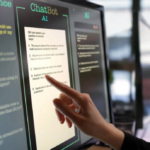In today’s dynamic job market, finding the right job goes beyond a match of qualifications and experience. It involves a delicate dance between the art of understanding individual strengths and preferences and the science of utilizing data-driven approaches and AI technology for optimal job placement.
Understanding the nuances of finding the perfect job fit can significantly impact job seekers and employers. Let’s delve into the intricacies of this process and explore how it has become a crucial aspect of modern recruitment.
The Art of Job Matching
Job matching starts with a deep dive into an individual’s skill set and strengths! Employers are now recognizing the importance of assessing not just qualifications but also the unique abilities that make a candidate stand out. The art lies in identifying these attributes and aligning them with the job’s requirements.
Beyond skills, the perfect job match considers personal preferences and values. Matching candidates with a company culture that resonates with their beliefs can lead to a more fulfilling work experience. This aspect of job matching adds a personal touch, making the process more human-centric.
In addition, crafting job descriptions tailored to attract the right candidates is an art form. By articulating the expectations and opportunities in a way that resonates with potential applicants, employers increase the likelihood of finding the perfect match. This involves a careful balance between clarity and appeal.
Role of AI In Modern Job Matching
Advancements in technology have brought AI to the forefront of job matching. Automated systems analyze vast amounts of data, helping identify patterns that lead to successful placements. The science of AI introduces efficiency and accuracy to the process, ensuring a better fit between candidates and roles.
Data-Driven Approaches for Skill Assessment
Traditional resumes only scratch the surface of a candidate’s capabilities. Data-driven approaches dive deeper into skill assessments, utilizing metrics to gauge a candidate’s proficiency. This scientific approach helps in matching candidates not just on paper but based on their actual capabilities.
A/B Testing and Its Impact On Job Placements
Understanding the psychological aspect of job matching involves psychometric testing. This scientific method assesses a candidate’s personality, cognitive abilities, and emotional intelligence. Integrating these insights into the job-matching ensures a more holistic and accurate evaluation.
Challenges in Job Matching
Job matching, despite its importance, is not without its challenges. Employers and job seekers alike face hurdles in achieving the perfect pairing of skills, values, and organizational needs. Let’s dive into five common challenges in job matching and explore potential solutions to address them.
Overcoming Bias In The Hiring Process
Despite advancements, biases can still influence the hiring process. Recognizing and addressing these biases is crucial for achieving a fair and unbiased job-matching system. Employers must embrace diversity and inclusivity to ensure a level playing field for all candidates.
Solution:
Implementing blind recruitment techniques, where personal information such as names and photos are removed from resumes, can help mitigate bias. Additionally, providing training to hiring teams on recognizing and addressing biases can contribute to a fairer job-matching process.
Addressing the Gap Between Expectations And Skills
Another challenge lies in aligning employer expectations with candidate skills. Bridging this gap requires effective communication and transparency. Employers and candidates must have a clear understanding of each other’s expectations to ensure a successful job match.
Solution:
Enhancing communication between employers and candidates is crucial. Clear and transparent job descriptions, realistic expectations, and ongoing feedback can bridge the gap. Employers should focus on essential skills and be open to the potential for growth and development in candidates.
Impact of Technological Advancements
While technology has significantly improved the efficiency of job matching, it also introduces challenges. The reliance on Applicant Tracking Systems (ATS) and automated algorithms may inadvertently exclude qualified candidates, leading to a lack of diversity in the hiring process.
Solution:
Employers should strike a balance between technology and human judgment. Regularly reviewing and updating algorithms to ensure they are inclusive and not inadvertently biased is essential. Additionally, combining technology with human-centric approaches, such as personalized interviews, can enhance the accuracy of job matching.
Balancing Hard and Soft Skills
While technical skills are crucial, the importance of soft skills is often underestimated. Balancing the assessment of hard and soft skills challenges job matching. Overemphasizing technical qualifications may lead to overlooking candidates with strong interpersonal skills.
Solution:
Implementing comprehensive assessment methods that consider both hard and soft skills is vital. Behavioral interviews, scenario-based assessments, and psychometric testing can provide a holistic view of a candidate’s capabilities, ensuring a well-rounded job match.
Strategies for Perfect Job Matching
Heading on the journey of finding the perfect job match involves weaving together various strategies that consider both the needs of employers and the aspirations of job seekers.
So, let’s explore the playbook of strategies for perfect job matching, where the aim is not just to fill a position but to create a lasting and satisfying connection between individuals and their roles.
Utilizing Technology
Utilizing technology enhances the efficiency of job matching. Automated algorithms can process large datasets to identify the most compatible matches. Employers can leverage these tools to streamline hiring processes and find the perfect fit faster.
Utilizing data analytics helps in identifying patterns of successful hires. By analyzing past recruitment data, employers can uncover trends, preferences, and characteristics that lead to a positive job match. This data-driven approach enhances the precision of candidate selection.
Personalized Career Counseling and Guidance
Job seekers can benefit from personalized career counseling. Understanding their goals, values, and aspirations can guide them toward roles that align with their long-term objectives. This human touch complements the scientific approach, creating a well-rounded job-matching experience.
Creating a Positive Work Environment
A positive work environment significantly influences productivity. A workplace that values open communication, collaboration, and a healthy work-life balance creates conditions conducive to peak performance. Job seekers are more inclined to thrive in environments where their contributions are recognized and they feel supported in achieving their professional goals.
Highlighting Cases of Successful Job Matches
Real-life success stories testify to the effectiveness of a perfect job match. Sharing these stories not only inspires confidence in the job-matching process but also provides valuable insights into the strategies that lead to successful placements.
Gather testimonials from both employers and employees involved in successful job matches. Success stories prove the organization’s commitment to finding the right fit. Showcasing instances where candidates seamlessly integrated into the company culture, demonstrated exceptional performance and contributed significantly underscores the effectiveness of the recruitment strategy.
Show the Impact Of Perfect Pairing On Career Growth
Job matching isn’t just about filling a position; it’s about fostering long-term career growth. Successful job matches contribute to employee satisfaction, engagement, and, ultimately, career advancement. These positive outcomes highlight the enduring impact of a well-executed job-matching process.
Quantify the career achievements that can be directly attributed to the perfect pairing. Whether it’s exceeding sales targets, leading successful projects, or earning industry recognition, attaching numbers to accomplishments adds a tangible dimension to the impact on career growth.
Recognizing Soft Skills
While technical skills are essential, soft skills are pivotal in job matching. Communication, teamwork, and adaptability contribute to a candidate’s success in a role. Recognizing and valuing these soft skills ensures a more comprehensive job-matching process.
Ensure that job descriptions explicitly mention the soft skills required for success in a particular role. By incorporating these skills into the job requirements, you set expectations and emphasize their importance in the hiring process.
Use Emotional Intelligence in The Hiring Process
Emotional intelligence is a key factor in building effective teams. Employers should prioritize candidates with high emotional intelligence, which contributes to a positive work environment and enhances collaboration. Integrating emotional intelligence into the hiring process enhances the precision of job matching.
Consider Future Technologies
The future of job matching holds exciting possibilities with the emergence of new technologies. Predictive analytics, augmented reality, and virtual assessments will revolutionize the hiring landscape. Staying ahead of these trends ensures that job matching remains dynamic and effective.
Use Evolving Recruitment Strategies
As the job market evolves, so do recruitment strategies. Employers must adapt to changing trends, such as remote work preferences and flexible schedules. Evolving recruitment strategies ensure that job matching continues to meet the evolving needs of both employers and candidates.
In conclusion, the art and science of job matching represent a crucial aspect of modern recruitment. Finding the perfect pairing involves a delicate balance between understanding individual strengths and leveraging data-driven approaches. By overcoming challenges, embracing technology, and recognizing the importance of soft skills, employers can create a hiring process that sets the stage for long-term success. You can also use iApply for a streamlined process of job search.
FAQs
What Role Does Ai Play In Job Matching?
AI plays a significant role in job matching by analyzing large datasets, identifying patterns, and streamlining candidate selection. It enhances efficiency and accuracy in finding the perfect match.
How Can Job Seekers Improve Their Chances Of A Perfect Job Match?
Job seekers can improve their chances by clearly understanding their skills, values, and career goals. Seeking personalized career counseling and updating industry trends can contribute to a successful job match.
Is Soft Skills Assessment Important In Job Matching?
Yes, soft skills assessment is crucial in job matching. Employers recognize the importance of communication, teamwork, and adaptability and consider them alongside technical skills for a more holistic evaluation.
What Are The Key Trends Shaping The Future Of Job Matching?
The future of job matching is influenced by trends such as predictive analytics, augmented reality, and evolving recruitment strategies. Staying informed about these trends is essential for both employers and job seekers.









